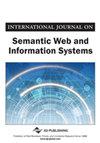A Path-Clustering Driving Travel-Route Excavation
IF 4.1
4区 计算机科学
Q2 COMPUTER SCIENCE, ARTIFICIAL INTELLIGENCE
International Journal on Semantic Web and Information Systems
Pub Date : 2022-01-01
DOI:10.4018/ijswis.306750
引用次数: 1
Abstract
The refueling trajectory of self-driving tourists is sparse, and it is difficult to restore the real travel route. A sparse trajectory clustering algorithm is proposed based on semantic representation to mine popular self-driving travel routes. Different from the traditional trajectory clustering algorithm based on trajectory point matching, the semantic relationship between different trajectory points is researched in this algorithm, and the low-dimensional vector representation of the trajectory is learned. First, the neural network language model is used to learn the distributed vector representation of the fueling station; then, the average of all the station vectors in each trajectory is taken as the vector representation of the trajectory. Finally, the classic k-means algorithm is used to cluster the trajectory vectors. The final visualization results show that the proposed algorithm effectively mines two popular self-driving travel routes.路径聚类驱动的旅行路线挖掘
自驾游游客的加油轨迹稀疏,难以还原真实的出行路线。提出了一种基于语义表示的稀疏轨迹聚类算法来挖掘热门自驾游路线。与传统的基于轨迹点匹配的轨迹聚类算法不同,该算法研究了不同轨迹点之间的语义关系,学习了轨迹的低维向量表示。首先,利用神经网络语言模型学习加油站的分布式向量表示;然后,取每条轨迹中所有站向量的平均值作为轨迹的向量表示。最后,采用经典的k-means算法对轨迹向量进行聚类。最终的可视化结果表明,该算法有效地挖掘了两条流行的自驾车路线。
本文章由计算机程序翻译,如有差异,请以英文原文为准。
求助全文
约1分钟内获得全文
求助全文
来源期刊
CiteScore
6.20
自引率
12.50%
发文量
51
审稿时长
20 months
期刊介绍:
The International Journal on Semantic Web and Information Systems (IJSWIS) promotes a knowledge transfer channel where academics, practitioners, and researchers can discuss, analyze, criticize, synthesize, communicate, elaborate, and simplify the more-than-promising technology of the semantic Web in the context of information systems. The journal aims to establish value-adding knowledge transfer and personal development channels in three distinctive areas: academia, industry, and government.

 求助内容:
求助内容: 应助结果提醒方式:
应助结果提醒方式:


